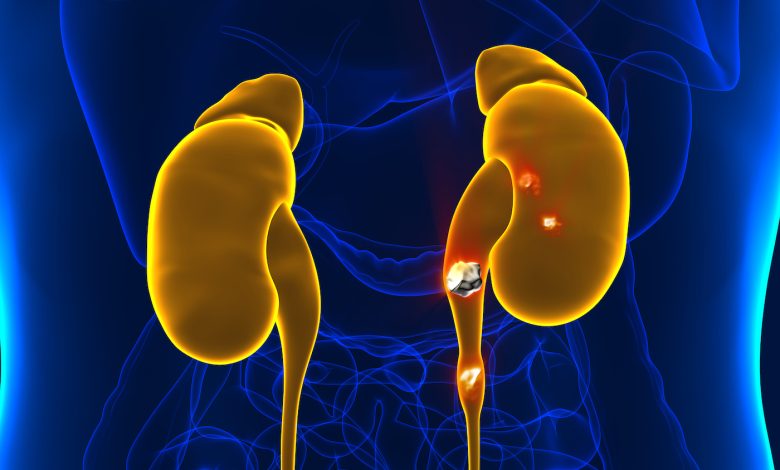Can You Take Flomax (tamsulosin) For Kidney Stones?

Kidney stones are solid, crystalline deposits that form within the kidneys or urinary tract. These stones can vary in size, ranging from as small as a grain of sand to as large as a golf ball. Kidney stones are primarily composed of minerals and salts, with the most common type being calcium stones, which form when calcium combines with other substances like oxalate or phosphate. Other types of kidney stones include uric acid stones, struvite stones (associated with urinary tract infections), and cystine stones (rare and caused by a genetic disorder).
Kidney stones can be extremely painful when they move from the kidney and travel through the urinary tract. The pain often occurs suddenly and is typically felt in the lower back, side, abdomen, or groin. Additional symptoms may include blood in the urine, a frequent urge to urinate, painful urination, and cloudy or foul-smelling urine. The severity of symptoms can vary depending on the size and location of the stone.
Treatment for kidney stones depends on several factors, including the size, type, and location of the stone, as well as the patient’s overall health. Small stones may pass on their own through increased fluid intake and pain management. However, larger or more problematic stones may require medical interventions.
What is Flomax (tamsulosin)?
Flomax (tamsulosin) is a medication primarily used to treat the symptoms of an enlarged prostate, a condition known as benign prostatic hyperplasia (BPH). It belongs to a class of drugs called alpha-1 adrenergic blockers or alpha-blockers. Flomax works by targeting specific receptors in the body to alleviate the symptoms associated with an enlarged prostate.
The prostate is a gland located just below the bladder, and as men age, it can gradually enlarge, causing symptoms such as difficulty urinating, weak urine flow, and frequent urination. Tamsulosin helps relieve these symptoms by relaxing the smooth muscles in the prostate and the neck of the bladder. This relaxation reduces the constriction of the urethra (the tube through which urine flows from the bladder), making it easier for urine to pass, and thus, improving urinary function.
Tamsulosin can also be prescribed to help manage kidney stones. When used for this purpose, it is often prescribed off-label to relax the muscles in the urinary tract, which can help ease the passage of kidney stones and reduce associated pain. It’s important to note that the use of tamsulosin for kidney stones is considered off-label, meaning it’s not specifically approved by regulatory agencies like the FDA for this purpose. However, it has been found to be effective in some cases to help facilitate the passage of small to moderate-sized kidney stones.
Dose of Flomax (tamsulosin) for kidney stones
The typical dosage of tamsulosin for kidney stones is as follows:
1. Initial Dosage: The usual starting dose is 0.4 milligrams (mg) once daily, usually taken 30 minutes after the same meal each day.
2. Duration of Treatment: Tamsulosin is typically prescribed for a limited duration, commonly for up to 4 to 6 weeks, or until the kidney stone has passed or been treated, whichever comes first.
3. Monitoring: During the course of treatment, your healthcare provider may monitor your progress, potentially adjusting the dosage or discontinuing the medication if it is not effective.
This dosage is commonly prescribed to relax the muscles in the urinary tract, including the muscles around the ureter (the tube connecting the kidney to the bladder). This relaxation can help facilitate the passage of kidney stones, making it less painful and allowing the stone to pass more easily.
However, it’s important to note that dosages and treatment duration may vary based on the specific recommendations of your healthcare provider. They will consider factors such as the size and location of the kidney stone, your overall health, and any potential side effects or interactions with other medications you may be taking.
Always follow your healthcare provider’s instructions carefully when taking tamsulosin or any other medication, and communicate any concerns or adverse effects you may experience during treatment.
How long does it take Flomax (tamsulosin) to help pass kidney stones?
The time it takes for Flomax (tamsulosin) to help pass kidney stones can vary from person to person and depends on several factors, including the size and location of the kidney stone, your individual response to the medication, and whether or not the stone is causing an obstruction or significant pain. Here are some general guidelines:
1. Pain Relief: Flomax can start working relatively quickly to relax the muscles in the urinary tract, including those around the ureter (the tube connecting the kidney to the bladder). This can provide some pain relief within a few days of starting the medication.
2. Stone Passage: The time it takes for a kidney stone to pass with the help of Flomax can vary widely. Small stones may pass within a few days to a couple of weeks, while larger or more complex stones may take longer. In some cases, the stone may not pass on its own, and additional medical intervention may be needed.
3. Individual Response: Some people may respond more quickly to Flomax, while others may take longer to experience its full benefits. It’s essential to continue taking the medication as prescribed by your healthcare provider, even if you do not notice immediate results.
4. Monitoring: Your healthcare provider will monitor your progress and may make adjustments to your treatment plan as needed. They may perform imaging tests (such as ultrasound or CT scans) to track the position and size of the stone.
It’s crucial to stay well-hydrated during this process, as adequate fluid intake can help facilitate the passage of kidney stones. If you experience severe pain, fever, or signs of infection while taking Flomax, you should contact your healthcare provider promptly, as these symptoms may indicate a complication that requires immediate attention.
Ultimately, the time it takes to pass a kidney stone with the help of Flomax can vary, so it’s essential to follow your healthcare provider’s guidance, stay in close communication with them, and be patient during the process. If the stone does not pass or if you experience complications, your healthcare provider will discuss further treatment options with you, which may include procedures like lithotripsy or surgical removal.
Flomax (tamsulosin) For Kidney Stones Side Effects
Tamsulosin when prescribed to help facilitate the passage of kidney stones, can have both common and less common side effects. It’s important to note that not everyone will experience these side effects, and some individuals may tolerate the medication well. If you are prescribed tamsulosin for kidney stones, you should be aware of potential side effects and discuss them with your healthcare provider if you have any concerns. Common side effects may include:
1. Dizziness: Tamsulosin can cause a drop in blood pressure, which may lead to dizziness or lightheadedness, especially when standing up from a sitting or lying position. To minimize this effect, it’s recommended to take the medication in the evening or at bedtime.
2. Headache: Some people may experience headaches while taking tamsulosin.
3. Runny or Stuffy Nose: Tamsulosin can affect the nasal passages, leading to symptoms like a runny or stuffy nose.
4. Abnormal Ejaculation: One of the unique side effects of tamsulosin is altered ejaculation. It can lead to decreased semen production or retrograde ejaculation, where semen is directed into the bladder instead of out of the penis. While this can be concerning, it is generally not harmful.
Less common side effects may include:
1. Orthostatic Hypotension: This is a significant drop in blood pressure when changing positions (e.g., standing up from sitting or lying down). It can result in dizziness, lightheadedness, or fainting.
2. Allergic Reactions: Although rare, some individuals may experience allergic reactions to tamsulosin, which can include rash, itching, swelling, severe dizziness, or difficulty breathing. Seek immediate medical attention if you suspect an allergic reaction.
3. Priapism: A prolonged and painful erection, known as priapism, can occur but is extremely rare. If this happens, seek immediate medical help.
4. Cataracts: Some studies have suggested a potential link between tamsulosin use and an increased risk of cataracts, but more research is needed to establish a definitive connection.
It’s essential to communicate any side effects or concerns with your healthcare provider while taking tamsulosin for kidney stones. They can assess your individual risk factors, adjust the treatment plan if necessary, and monitor your progress throughout the course of treatment. If you experience severe or concerning side effects, contact your healthcare provider promptly.





